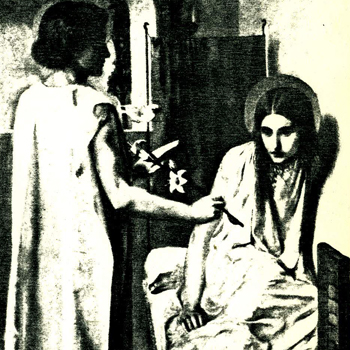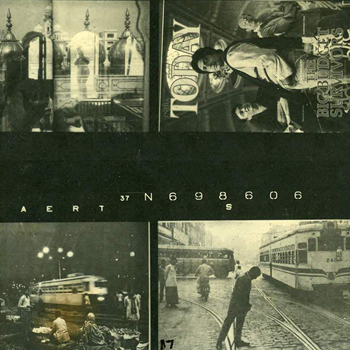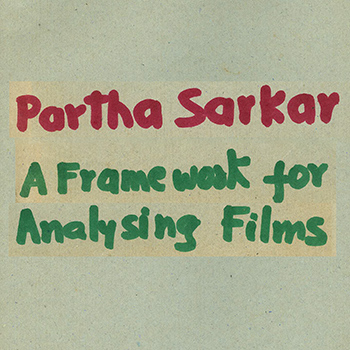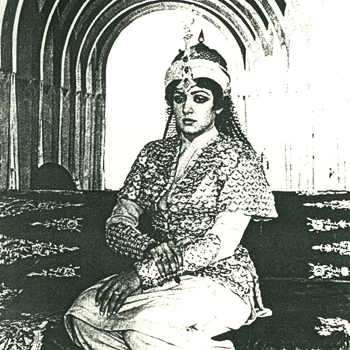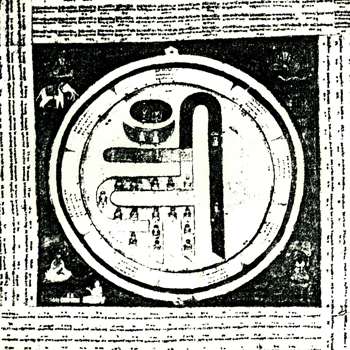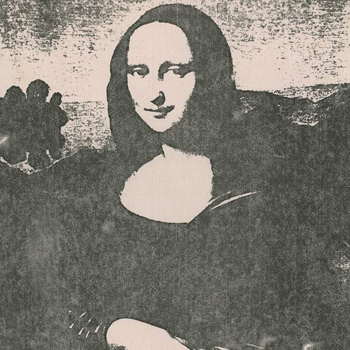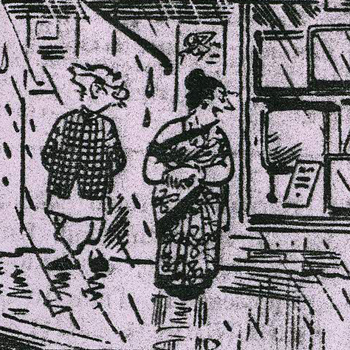Communication Design
Batch 1985-1987
(8 items)
Communication DesignBatch 1985-1987
(8 items)
(8 items)
by Bhavana Sheth
by K. Senthilvel
The world of today is a world of images. Humankind continues to reveal the truth in mere images. Photographs teach us a new visual code; they alter and enlarge our motions of what is worth looking at and what we have a right to observe. They are a grammar and, even more importantly, an ethics of seeing. To collect photographs is to collect the world. and television programmes light up the walls and flicker. Movies and go out, but with still photographs, the image is also an object: lightweight, cheap to produce, easy to carry about, accumulate, and store. Photographs really are an experience captured, and the camera is the ideal arm of consciousness in its acquisitive mood.
Photographs furnish evidence. Something we hear about but doubt seems proven when we are shown a photograph of it. In one version of its utility, the camera recorder incriminates. A photograph passes for incontestable proof that a given thing happened. The picture may distort, but there is always a presumption that something exists or did exist that is similar to what is there in the picture. From the object to its image there is ofcourse a reduction *Extracts from "On Photography" by Susan Sontag in proportion, perspective, colour but at no time is this reduction a 'transformation'.Certainly the image is not reality, but at least it is its perfect 'analogon," and it is exactly this analogical perfection that, to common sense, defines the photograph. The act of photography is a gesture of sorts. Most subjects photographed are, just by virtue of being photographed, touched with pathos. To take a photograph is to participate in another person's (or thing's) mortality, vulnerability, and mutability.
by Kiran K Bidwai
Art has a potentially vital role in the learning process of children. The process of drawing, painting, or constructing is a complex one in which the child brings together diverse elements of his experience to make a new and meaningful whole. FOR THE CHILD, ART IS A DYNAMIC AND UNIFYING ACTIVITY.
In our present educational system, most emphasis has been put on the learning of factual information. More and more people are recognising that the ability to learn differs from age to age and from individual to individual, and that this ability to learn involves not only intellectual capacity but also social, emotional, perceptual, physical, and psychological factors.
What a person knows or does not know may have no relationship to creative action. One of the basic ingredients of a creative art experience is the relationship between the artist and his environment. Painting, drawing, or constructing is a constant process of assimilation and projection that involves taking in through the senses a vast amount of information, mixing it up with the psychological self, and putting into a new form the elements that seem to suit the aesthetic needs of the artist at the time.
Man learns through his senses. The ability to see, hear, smell, and taste provides the means by which an interaction between man and his environment takes place. The greater the opportunity to develop increased sensitivity and the greater the awareness of all the menses, the greater will be the opportunity for learning.
by Partha Sarkar
In an essay from 1945, Eisenstein described three levels at which films could be looked at. A long-shot film theory looked at films in order to unravel their political and social implications. The medium-shot film theory focuses on the human scale of the film—its story, its characters, its drama, etc.—while the close-up film theory breaks down a film into its elements and takes a close look at them in order to reveal their contribution to the overall film. Most analysts look at films from the first and second viewpoints; what is ignored is the close-up view, a view that could reveal to us how cinematic variables like editing, sound, light, lenses, camera movements, framing, colours, etc. are being used in harmony to create moods, ambiences, and an expressive power that is purely cinematic. As a consequence, an analysis of Tagore's NASHTANEER and Ray's CHARULATA (Ray's film version of NASHTA-NEER) would have the same tonal values. The reason seems clear: most analysts come from a literary tradition and extend a methodology for literary analysis onto films.
With the growth of semiotics as an important discipline, this is remedied, as semiotics is the study of signs, and with the sign systems for cinema and literature being different, analysis specific to the medium produces different results.
This paper, then, is an attempt to integrate the above-mentioned views and further develop an elaborate framework for looking at Indian films. Mirch Masala is being used as a vehicle for developing this framework. There are a number of reasons for this choice. MIRCH MASALA has been funded by the N.F.D.C. and has been a fair commercial success, though its success is partly due to the TAX FREE' status that it enjoyed. The film uses a lot of commercial idioms and yet maintains a distance from the regular commercial outpourings. Thirdly, Ketan Mehta, the film's director, claims to be politically conscious (CINEMA IN INDIA, Vol. 1), and hence would be conscious of the political implications of the choices that he would be making in the design of the film. And finally, a close-up view does reveal a conscious selection of cinematic variables and their appropriate usage within a framework of classicism.
by S K Singh
It is a common belief that popular cinema is not usually intended to be important or significant - that it is trash because the sole objective behind its production is to make money and provide cheap entertainment. And still, these movies are considered important for the following reasons: that they are capable of influencing people, that they can teach wrong values, that they can cause psychological damage, etc.
The popular films are considered escapist mass entertainment that distracts the poor from the real cause of their misery. There are others who argue with equal zeal that these films play a positive role; these films fulfil the psychological needs of the poor and express concern about the real issues of poverty, crime, violence, communal prejudice, and the institution of family; they also provide a preferable diversion from cockfighting, drinking, and gambling.
In India, more than 800 films are made every year and watched by more than 12 million people every day. The popular television programmes are either based on popular cinema or are imitations of it. The Vividh Bharati radio service transmits music and other programmes from popular cinema for more than 70% of its transmission time.
'What is it that makes 'The Popular Cinema' popular?" is the basic question to be answered through this seminar paper. In general terms, to what extent is popular cinema a reflection of society's interests and 'ways of seeing'? And more specifically, what are the ingredients used in these films that tell us about the society that supports and sustains this kind of cinema? One of the answers offered to the question "Why are Bombay commercial films so popular?" is that the masses seek pleasure and diversion from the daily grind and that they find it in the explosive action and melodramatic emotions of this cinema.
One may ask why look for meaning in a product when neither its makers nor its audience intend for its contents to be regarded as serious or important. Not all movies that are made for the purpose of making money and providing entertainment become commercial successes. So, it is not just the presence of a few 'stars' and 'a formula story' that make a film successful. The cinema, like language, requires its viewers to understand its grammar in order to be able to enjoy it, and the elements of this language are the style, fashion, archetypes, ideas, beliefs, etc. of a particular social reality. The profit motives behind the creation of these films force the producers to produce what they believe the audience will like. According to Pradip Krishnan, 'it is possible to make out a convincing case that it is not the poor audience but the powerful producers and distributors who are manipulated by their perception of what the audience wants."
by V V Vidwans
This study is an attempt to understand the true spirit of Indian art. When one reads the title of this paper, 'Indian Graphic Elements in Layout', one cannot understand exactly what it means. So I am briefly explaining the aims and objectives of this paper. First of all, I am concentrating on the study of composition and layout in Indian miniatures. For that, I will discuss the characteristics and canons of Indian painting, which are based on a specific philosophy and way of thinking. Secondly, what makes the Indian I will try to answer the question, "What are Indian images?" through the analysis of the elements and principles of Indian painting."
Today's Indian art is passing through a state of confusion. Today's artists and designers are imitating either Western styles or traditional Indian styles without understanding the true nature of these art forms, and obviously, their output appears to be of second-grade quality. Unfortunately, today India's contribution to global art is nil. So if one wants to cross this stage, this study will be helpful.
Art is a human activity that is spontaneous but controlled and that involves skill as well as intellect. In a broader sense, art means "being," but normally the usage of this word is limited to human activity. When we talk about design, this above definition sounds more logical. Design pays more attention to the planning and proper execution of the means to create the end product. Traditional Indian art also believes in the same process. So the study of art in Indian culture seems relevant to understanding the nature of art in India.
by Yumnam N Singh
The aim of this study is to understand the various possibilities of an image and its wide spectrum of representivity. An image is not just an image per se. Apart from the figure itself and its meaning, there are other factors like the illustration technique, the style of illustration, and the printing process that add to the dimension of the image.
Along with the development of various tools, the nature of the image has also undergone change. The photographic images, produced by using fine lenses and light sensitive emulsions, are different in tonal values as compared with brush-rendered images. Air compressors with air brushes have brought in fine-finished images whose texture is entirely new. The images produced on computers have a different quality altogether. Over the year, various tools and materials have been used by artists and designers to create various visual images.
When the images are used to convey specific information, the art form is normally called illustration. However, art and illustration can never be separated entirely. Illustration relies heavily on traditional art, skill, and techniques; when we say visual art, it is always associated with painting, sculpture, and other visual images. It is assumed to have less commercial value and be richer in aesthetic value. If we transform the painting into illustrations, it serves the purpose in various areas.
Illustration is commonly taken to mean art in a commercial context, and social and economic influences therefore dictate the form and content of the illustration. Illustrators have always been eager to grasp the opportunities offered by the development of new mechanical aids to improve their skills and widen the scope of their work. In fact, illustration has always been defined as analytical and descriptive drawing, particularly in the fields of science, topography, medicine, and architecture. But the scope and meaning of illustration are fast changing. Illustration is being recognised as art too. In this study, an attempt has been made to study an image and its style, techniques, and process.
by Y N Vivekananda
Cartoons are undoubtedly a very powerful communication medium since they use pictures to communicate and since they blend with the message to be conveyed. It is very interesting to study and analyse the way cartoons have become very effective as a powerful communication medium. The cartoons of R.K. Laxman, which appear every day in the news paper "Times of India," are a natural choice owing to their having been one of the most popular, lasting, and having deep relevance to the every day life of the ordinary citizen.
The cartoons of R.K. Laxman fall largely under the theme of socio-political affairs and therefore deal with the current political situation, economic order, and every day life of the ordinary citizen. As an introduction to the compilation of his cartoons under the title "You said it", R.K. Laxman remarks, "My cartoons are drawn with the object of producing a laugh or at best a smile, but many readers believe that they have a deeper social purpose". But there can be little doubt that his cartoons do more than merely make us laugh. In a very subtle way, we identify ourselves with the environment, situation, and characters that he creates, and we realise that it's all for us and about us.
It is the aim of this seminar to analyse the aspects of visual semantics in his cartoons to better understand how any ordinary citizen identifies the various environments, situations, and characters and their own relationship to them.
